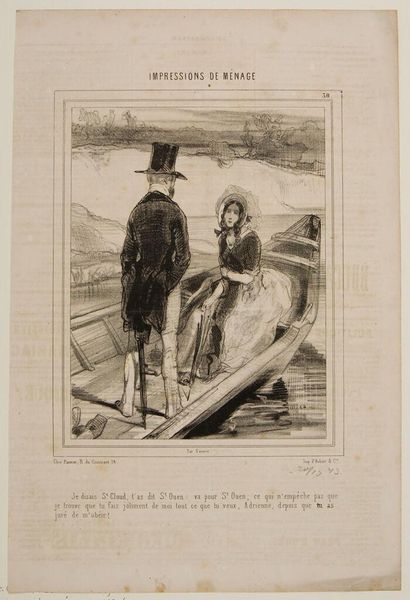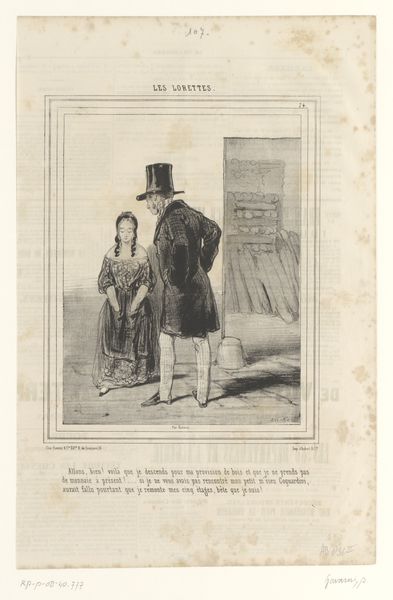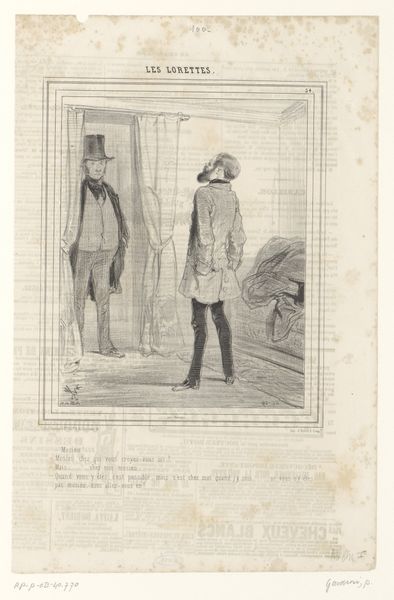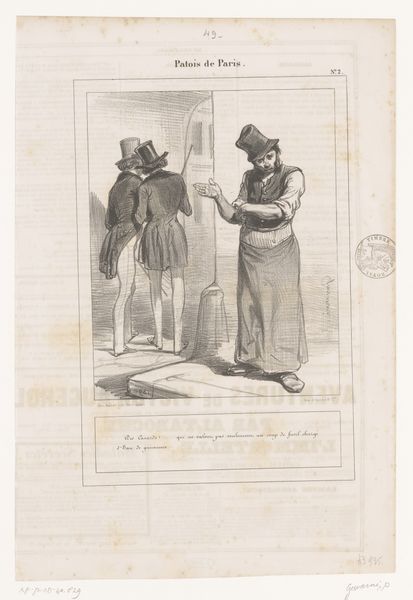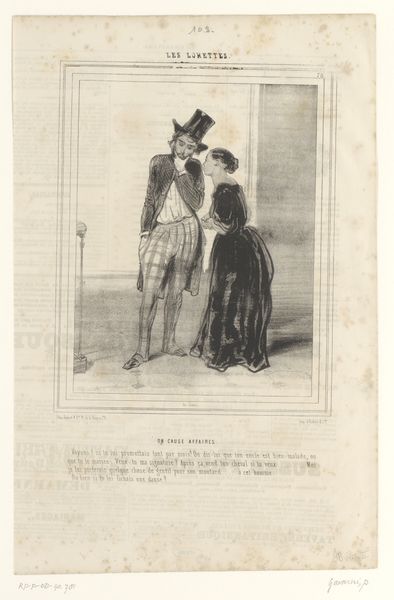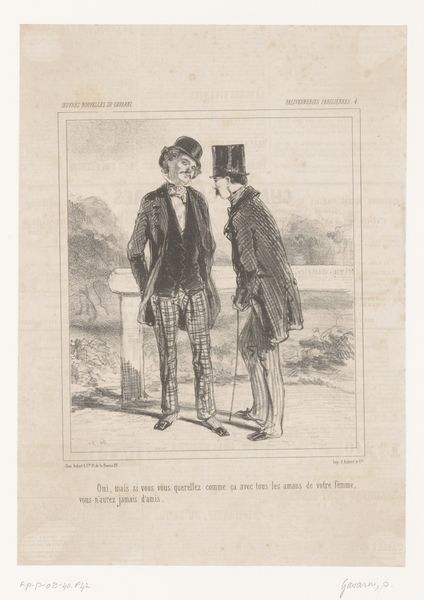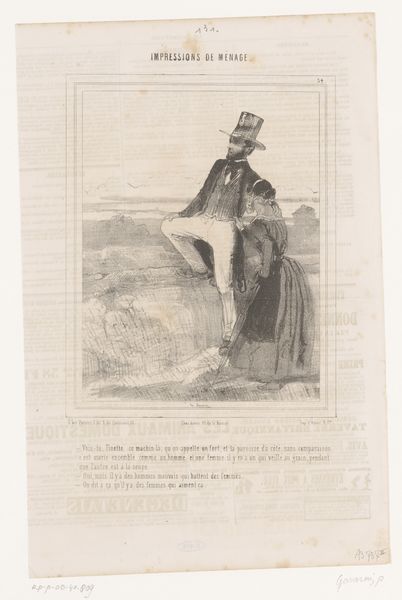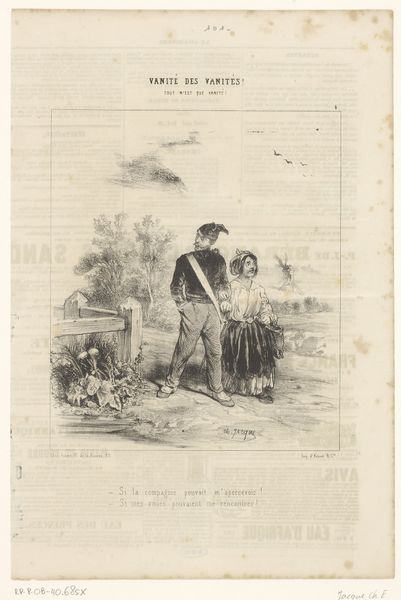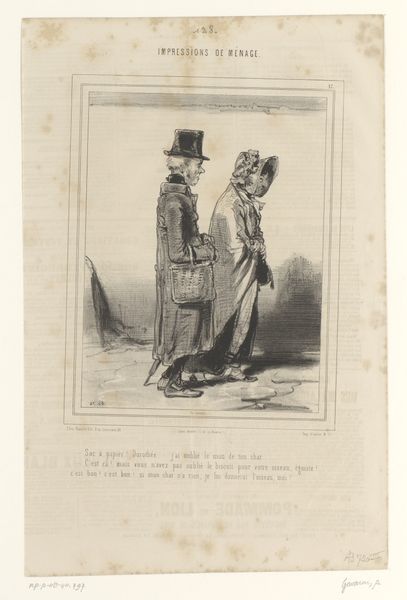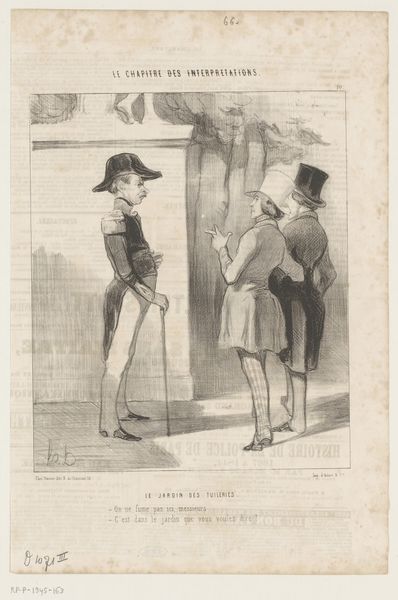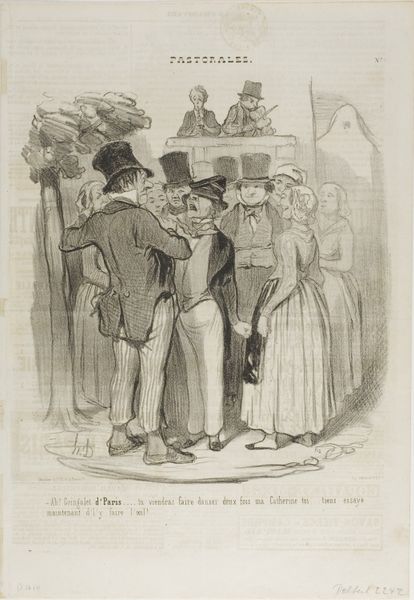
drawing, paper, ink
#
portrait
#
drawing
#
aged paper
#
toned paper
#
light pencil work
#
narrative-art
#
pencil sketch
#
old engraving style
#
paper
#
personal sketchbook
#
ink
#
old-timey
#
romanticism
#
sketchbook drawing
#
pencil work
#
genre-painting
#
sketchbook art
Dimensions: height 362 mm, width 237 mm
Copyright: Rijks Museum: Open Domain
Editor: Here we have "Couple in a Boat on the Seine" by Paul Gavarni, created in 1843, using ink and pencil on paper. The tones are muted, it has a romantic, sort of melancholy air about it...What do you see in this piece, looking at it through a broader lens? Curator: This drawing gives us an intimate snapshot of 19th-century Parisian life, doesn't it? But it's not just about a couple on a boat ride. Consider the gender dynamics at play. We have this elegantly dressed woman, seemingly passive, while the man, stiff and formal in his top hat, appears to be in control. What commentary might Gavarni be making on the roles of men and women in that era? Editor: I didn't initially consider the power dynamics like that, I was more focused on the… romance of it. But now I see the almost unsettling stillness of the woman. Curator: Exactly. Think about the social constraints placed upon women during this time. How did expectations surrounding marriage, class, and appearance limit their agency? And then consider the title itself – "Impressions de Ménage." Could it be subtly hinting at the expectations, or even burdens, of domesticity? Does Gavarni romanticize or critique? Editor: So, it’s more than just a pretty scene. It's about questioning societal norms and perhaps the lack of autonomy for women within those relationships? Curator: Precisely. Art doesn't exist in a vacuum. By understanding the social, political, and gendered context, we unlock deeper meanings and can start critical discussions. What do you make of that? Editor: That’s really eye-opening. I see now how crucial it is to examine the historical backdrop and power structures, otherwise the true voice of the artwork remains muted. Curator: Indeed, art becomes a powerful tool when it speaks truth to the existing power. We understand how this narrative may echo throughout generations to affect relationships of our time.
Comments
No comments
Be the first to comment and join the conversation on the ultimate creative platform.
